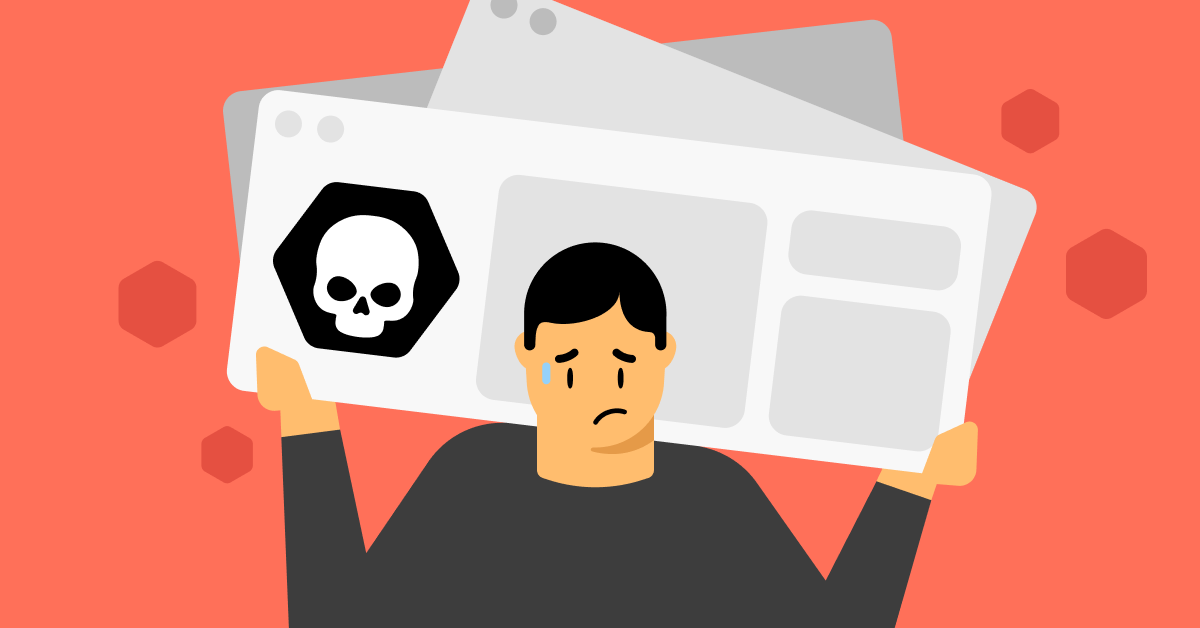Information warfare: Concepts, impact, and examples
It’s unlikely you’ll ever have to defend your country in a traditional sense. But as information warfare begins to spill into various industries, there is a growing emphasis on more human-related aspects, such as psychological manipulation and social engineering, rather than just technical attacks. In other words, chances are you’re already in a war. Information warfare isn’t a new concept, but new computer science advancements such as artificial intelligence allow it to spread faster than ever before.

Table of Contents
Table of Contents
So what is information warfare? Let’s look at how it is employed by different countries, what types can be identified, and what role you play in this war.
What is information warfare?
Information warfare is a part of advanced battlefield management strategies that uses information to help you achieve your goals and gain advantage over your enemy. If it sounds broad, it is. This type of warfare includes everything from damaging the enemy’s ability to make correct decisions on the field to nation-sponsored hackers launching attacks against companies in another nation. It can even be used in political warfare.
If you’re not in the military, the most useful information warfare definition for you is the one that includes cyberwarfare. In other words, it is using incorrect information to manipulate the public and sow distrust in its government.
What are the types of information warfare?
Here are the most common types of information warfare:
Command and control warfare
Command and control warfare (C2W) includes strategies and tactics to disrupt the enemy’s movement and decision making, such as decoys and jamming signals. Without accurate information and ability to communicate that information to troops, commanders can be slowed down, led into traps, and lose initiative. C2W also includes how military forces are used to counter these tactics.
Intelligence-based warfare
Intelligence-based warfare (IBW) encompasses every way an army can use devices and sensors to make battlefield decisions. For example, satellite imagery can reveal the enemy’s movements despite its claims of ceasefire.
Electronic warfare
In electronic warfare, various equipment such as radars are used to find and interfere with the electronic signals as well as protect your own signals by hiding them, changing frequencies, or using special codes.
Psychological warfare
Psychological warfare is essentially mind tricks meant to confuse and demoralize the opponent. Propaganda is the most common way to do it. Dropping leaflets on the enemy territory with claims they’re losing the war badly is one example. You’ve probably also seen Russia and China’s military parades in the news. Those are a tactic of psychological warfare, meant to intimidate other nations, even if the country hosting them doesn’t plan to attack.
Economic information warfare
Economic information warfare (EIW) is the strategic use of information to affect the enemy nation’s economy. EIW involves spreading false information to manipulate stock prices, leaking sensitive financial information, and using cyberattacks to disrupt financial systems.
Hacker warfare
Hacker warfare isn’t fought on the battlefield. It doesn’t even involve soldiers. Instead, it’s warfare where a state encourages or at least overlooks the cybercrimes of individuals and hacker groups operating from their country.
Cyberwarfare
While hacker warfare involves small groups of hackers and is sometimes state sponsored, cyberwarfare is all about building an army of hackers to sabotage infrastructure, conduct cyber-espionage, and influence election campaigns. For example, according to the United Nations, North Korea uses hackers to steal from foreign companies and cryptocurrency exchanges in order to fund its nuclear and missile development program. Hackers can also be the ones to defend. Hacker collective Anonymous has launched numerous cyberattacks against Russia since it invaded Ukraine in 2022.
Information warfare examples
Foreign nations’ use of social media to spread misinformation in other countries is a prime example of information warfare. Several presidential election cycles in recent years (in France, Italy, and Germany, for example) have seen spikes in social media misuse, but none have been researched as much as Russia’s interference in the 2016 U.S. presidential election.
Researchers have found that during the years prior to the election, Russia used its Internet Research Agency (IRA), also known as a “troll farm,” to spread divisive content and propaganda on various social media platforms, such as Twitter, Facebook, and Instagram. The “trolls” created pages targeting specific groups of Americans. In addition to the IRA, Russia also hacked the DNC and leaked thousands of stolen emails to sow distrust in Donald Trump’s opponent, Hillary Clinton, and damage her campaign. It’s worth noting that Russia launched a similar campaign during the 2020 U.S. presidential election.
The UK’s vote to leave the European Union, or Brexit, in 2016 is considered another example of information warfare, where Russia saw an opportunity to weaken the EU. While Russia’s level of interference is still a matter of debate, many suggest it was significant. For example, a sample of 1.5 million tweets related to Brexit showed that 30% of the tweets came from just 1% of accounts.
Russia is not alone in meddling in other nations’ affairs. China has been accused of using information warfare against Taiwan and Australia. North Korea often broadcasts messages to misinform South Koreans. Even the U.S.’s Radio Free Europe broadcast during the Cold War could be considered information warfare.
What infowar players are and how they spread misinformation
An army has generals, corporals, sergeants, and privates, all receiving orders from the leader of the movement. Information warfare is similar in that its soldiers come in all shapes and sizes. Here are how different groups are used in information warfare:
- Insiders and authorized users. They have access to sensitive information and resources and can be bribed or blackmailed to share their knowledge. For example, they can leak internal communications they have access to.
- Organized crime organizations. They often seek financial gain but can also be employed to perform criminal acts such as blackmailing individuals to release or suppress information.
- Foreign countries. The goal here is often the advance of national interests and swaying public opinion in a foreign country. Like we already mentioned, foreign countries can use troll farms to push certain narratives on social media.
- Terrorists. Terrorism is used for propaganda and spreading fear. A terrorist organization can spread rumors about an impending attack to cause panic in public.
- Industry and economic espionage. Companies can spy on competitors to gain an advantage by releasing the competitor’s trade secrets.
- Hackers. They can be motivated or hired to attack companies and spy on individuals, but in information warfare, hackers can hack websites to show false information or use stolen social media accounts to spread misinformation.
How can we fight information wars?
Whether you’re a casual internet user, a known figure with a significant following, or even an owner of a social media company, you can be exploited to fight in an information war for another country. On one hand, if you share outrageous claims online without verifying them, you may be helping the enemy of your country.
However, we can all play a part in helping fight the information war either by being more conscious online or encouraging the government to take more serious measures against misinformation. Here are different aspects to build your defense on:
Data security
Information warfare is in large part about leveraging the information you obtain from your enemies. That’s why data security should always be a priority.
Encryption will often be enough for casual users. If you protect your traffic and data with end-to-end encryption tools and secure your accounts with multi-factor authentication, you’ve made a huge step towards staying safe online.
Companies can employ modern firewalls and intrusion detection systems (IDS) to monitor network traffic and identify suspicious activity. Not to mention that with the emergence of AI-based tools, enterprises can use advanced algorithms that analyze patterns in network traffic and recognize potential misinformation campaigns in real time.
Legislation
On a larger scale, we can help shape laws that may be lax about data storage, user privacy, and cybersecurity. Of course, the European Union’s GDPR made it easier to safeguard data, making it hard for cybercriminals to misuse it in their campaigns. However, Europe and countries beyond still have a long road ahead.
Many countries still lack comprehensive laws to protect individuals’ data. By advocating for stronger regulations and supporting policies that prioritize user privacy, we can create a safer digital environment for everyone. Public involvement and awareness can push governments to take stronger action and close existing loopholes in the current laws, such as increasing sanctions and punishments for data mishandling.
Public awareness
They say that a lie can travel halfway around the world before the truth gets out of bed. And that’s why the public is often the target for misinformation. Especially now since the rise of deep fakes enables anyone to create fake pictures and videos almost indistinguishable from real things. Such fake content can catch on like wildfire, so while educating the public is not easy, it’s crucial in hindering information warfare and misinformation efforts.
Some examples include schools and local organizations holding workshops on spotting lies online. Students young and old can be taught how to do research, double-check news sources, recognize phishing, ask questions, and be more careful about what they share online.
The future of information warfare
Predicting the future of information warfare accurately is virtually impossible, but if we were to take anything from Russia’s invasion of Ukraine, we can predict that many tactics will stay relevant as far as 30 years into the future. That’s because people’s nature hasn’t changed that much in thousands of years. Our fears, tendency to seek out conspiracies, and distrust politicians are always targets in an information war. But here are some new technologies that can have an impact or completely change these classic warfare strategies:
- Deep fakes. AI advancements have made it possible to create videos, audios, and photos that a casual user would be unable to distinguish from the real media. Technology is continuing to improve, allowing criminals to impersonate individuals and spread misinformation more easily as well as sow distrust in existing records and research.
- Quantum computing. Quantum computing may not be here yet, but as it becomes more prevalent, it may have the power to break every existing encryption algorithm used today, not to mention completely change the landscape of secure communication.
- AI-driven misinformation campaigns. A single click can now produce hundreds of fake messages in seconds, making it an important tool for launching and running misinformation campaigns powered by AI.
- Space-based warfare. Privately owned satellites can empower people in developing countries or shift the tide of war by enabling or disabling an army’s access. We saw Elon Musk do so with his Starlink satellites, and we’re likely to see this issue increase in relevancy.
Want to read more like this?
Get the latest news and tips from NordVPN.

